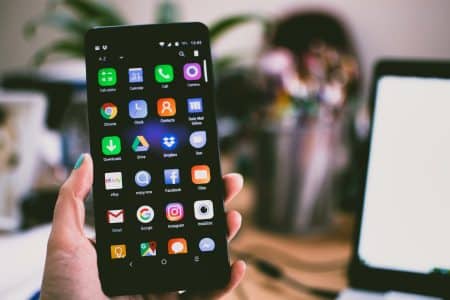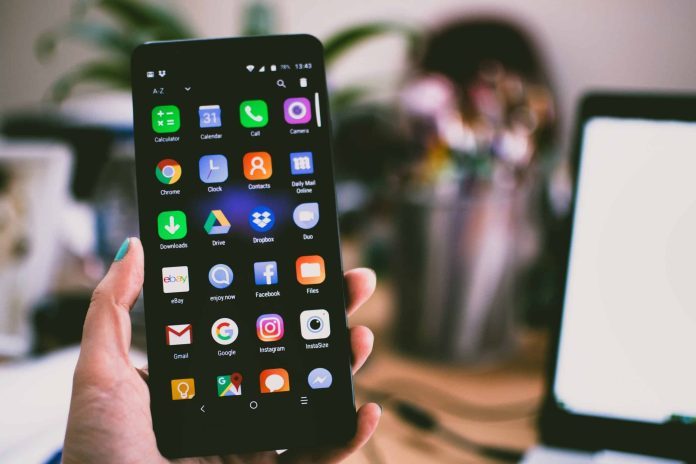
In today's digital world, each photo has its importance and tells a story. However, losing these memories can be devastating. However, fortunately, there are apps specifically designed to help recover deleted photos.
Why are photos deleted?
Many times, photos are deleted accidentally or due to system crashes. Other times, it could be viruses or even a botched operation on the device.
Top 5 apps to recover deleted photos:
There are many applications available, but we highlight the five best to help you with this task:
DiskDigger:
DiskDigger is a file recovery tool. It is designed to help users recover lost or accidentally deleted files from storage devices such as hard drives, pen drives, SD cards and others. It is especially useful when you accidentally delete photos, videos, documents and other valuable files.
Here are some features and information about DiskDigger:
- Recovery Modes: There are basically two recovery modes in DiskDigger: “basic scan” (for recently deleted files) and “full scan” (for files deleted a long time ago and after formatting a device).
- Simplicity: DiskDigger's interface is intuitive, making it accessible even to non-technical users.
- Recovery in Various Formats: DiskDigger can recover a wide range of file formats, including photos (JPG, PNG), videos (MP4, AVI), music (MP3, WAV) and documents (DOC, PDF).
- Preview: Before recovering a file, the software allows you to preview the file to confirm if it is the one you want to restore.
- Compatibility: Although DiskDigger started as a tool for Windows, there is also a version for Android devices, allowing you to recover files directly from smartphones and tablets.
- Versions: There are free and paid versions of DiskDigger. The free version allows file recovery to some extent, while the paid version (Pro) offers more features and recovery capabilities.
- Limitations: Although DiskDigger is effective, it does not guarantee 100% recovery of lost files. The effectiveness of recovery depends on several factors, including how long it has been since deletion and whether data has been overwritten.
Dr. Fone:
Dr. Fone is software developed by Wondershare that offers a variety of solutions for mobile devices. It's widely known for its capabilities to recover deleted photos, but it also includes other useful tools for iOS and Android devices. Here are some of the key features and information about Dr. Fone:
- Data recovery: This is the most popular feature of Dr. Fone. It allows users to recover lost or deleted files from their devices, including messages, photos, videos, contacts, call history, among others.
- Transfer: Dr. Fone offers the ability to transfer data between iOS devices, Android devices and computers. This is useful, for example, when you are changing phones and want to transfer all your data to the new device.
- Backup and Restore: Apart from recovery, the software also gives you the option to backup your data on your device and later restore it.
- Unlock: If you forget your device's passcode or have trouble with Activation Lock, Dr. Fone has a tool to help unlock it.
- System Repair: For software issues that cause system crashes, black screens, boot loops and other common problems, Dr. Fone offers a solution to repair the device's operating system.
- Data Manager: This tool allows you to easily manage files on iOS and Android devices, including importing, exporting, deleting, and more.
- Compatibility: Dr. Fone is compatible with a wide range of devices and operating system versions, both iOS and Android.
- Versions: Like many recovery software, Dr. Fone offers both a free version (with limited functionality) and paid versions with full features.
- Interface: The software has a user-friendly and intuitive interface, making it accessible even to non-technical users.
PhotoRec:
Developers created PhotoRec as a free and open-source data recovery software especially for recovering images from digital camera memory cards, but it also recovers many other types of files from various storage devices. Here are some features and information about PhotoRec:
- File Diversity: Although the name suggests a focus on photos, PhotoRec can recover more than 440 file types, including video formats, documents, and audio files.
- Supported Devices: You can use PhotoRec to recover files from hard drives, CD-ROMs, USB sticks, SD cards and other storage devices.
- File System: It is designed to work independently of the file system. This means it can recover files from FAT, NTFS, exFAT, ext2/ext3/ext4 and even unpartitioned file systems.
- Security: When recovering files, PhotoRec does not attempt to “patch” or write to the device it is recovering from, which minimizes the risk of causing further damage or overwriting data.
- Interface: PhotoRec's main interface is text-based (CLI – command line interface), although they have developed a GUI (graphical user interface) version called QPhotoRec. This can be a little intimidating for less technical users, but the instructions are generally clear.
- Operation mode: PhotoRec searches for known file “headers”. When it finds one, it tries to recover the entire file from that point on. This makes it especially effective even in situations where the file table (such as the MFT on NTFS systems) has been damaged or destroyed.
- Supported Platforms: PhotoRec supports multiple platforms and runs on Windows, Linux, macOS and other systems.
- Open code: Being open source software, anyone can examine its code, which can give more confidence regarding its security and effectiveness.
EaseUS MobiSaver:
EaseUS MobiSaver is data recovery software specifically designed for iOS and Android devices. It is developed by EaseUS, a company known for its software solutions in data recovery, backup and disk management. MobiSaver is intended to help users recover lost or deleted data from smartphones and tablets.
Here are some features and information about the EaseUS MobiSaver:
- Data recovery: MobiSaver can recover a variety of file types, including photos, videos, contacts, messages, notes, call logs and more.
- Supported Devices: In addition to being compatible with most iPhone, iPad and iPod Touch models, it also supports Android devices from various brands.
- Data Loss Scenarios: Developers have designed the software to handle various situations such as accidental deletion, software crash, unsuccessful jailbreak, operating system updates, water damage, physical damage and others.
- Recovery Modes: MobiSaver offers different recovery modes such as direct device recovery, iTunes backup recovery, and iCloud backup recovery (for iOS devices).
- Preview: Before finalizing the recovery, the software allows users to preview the recoverable files, which helps you specifically select which data you want to recover.
- User Interface: MobiSaver has a user-friendly and intuitive interface, which makes the recovery process easier even for non-technical users.
- Versions: The software is available in both a free version and a paid Pro version. The free version has some limitations regarding the number and type of files that can be recovered, while the paid version offers full recovery capabilities.
- Updates: EaseUS frequently updates MobiSaver to ensure compatibility with the latest versions of operating systems and to improve its data recovery effectiveness.
Step by step to recover deleted photos:
- Choose the correct application: Depending on your device and need, choose the app that fits best.
- Install the application: Download and install your chosen application.
- Run the scan: Launch the app and allow it to scan your device.
- Select photos: Choose the photos you want to recover from the scan results.
- Recover and save: Click on the recovery button and save the photos to your desired location.
Tips to avoid losing photos:
- Make backups regularly: Having a backup of your photos can be the difference between losing memories and keeping them safe.
- Avoid unknown apps: Apps from untrusted sources may contain malware that can erase or corrupt your photos.
- Keep your software up to date: Updated operating systems and applications are less prone to crashes that can lead to data loss.
To conclude, recovering deleted photos is possible with the right tools. Then follow our tips and you can get your precious memories back with ease. Finally, always remember to make backups and be cautious with your devices.
